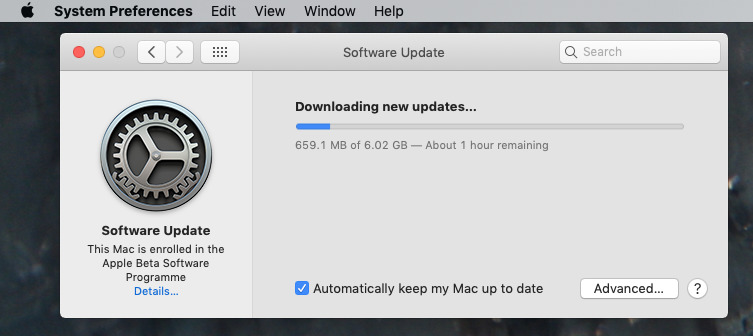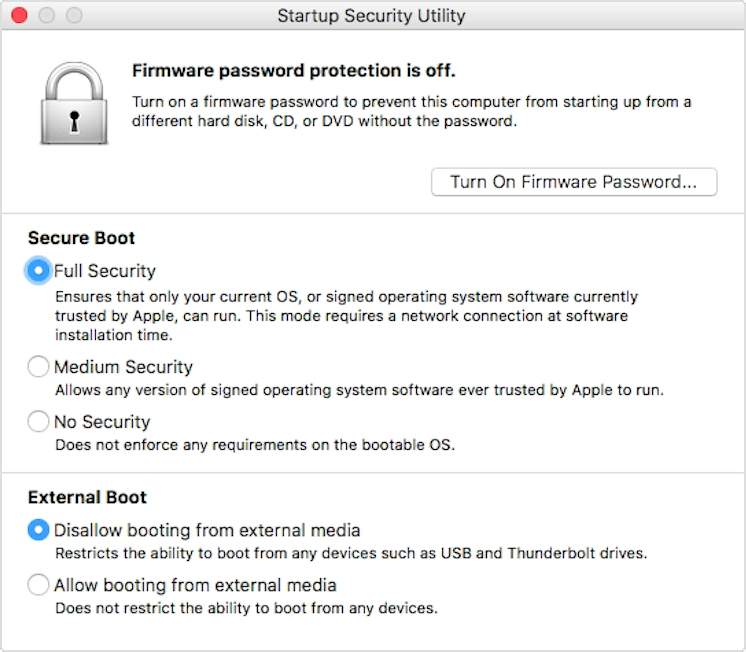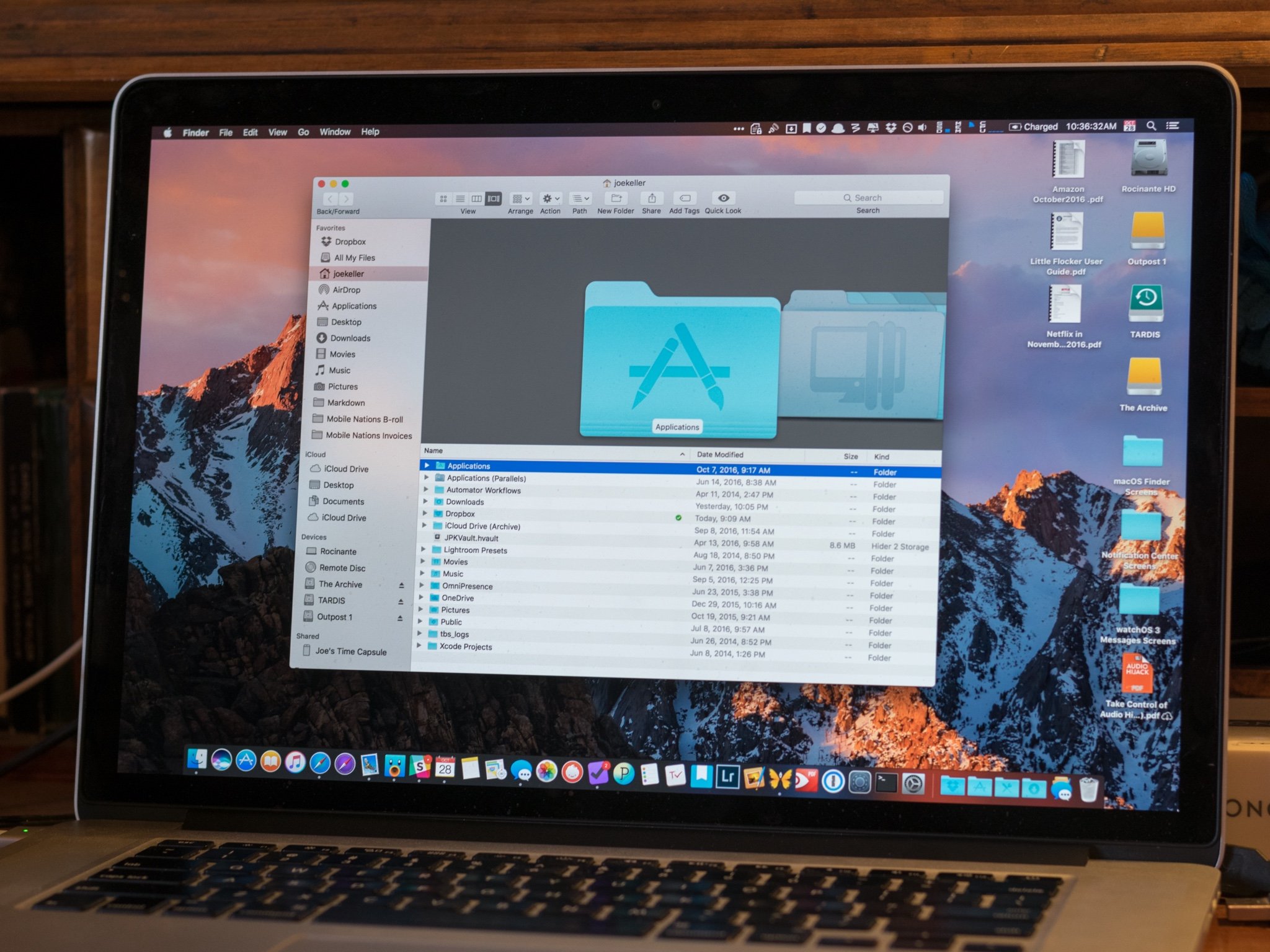-
Download Macos To External Drive카테고리 없음 2020. 12. 3. 08:44
Computer - MacBook Software - Mac OS X 10.5.8 Internet - Safari I want to download a large file directly to my external drive. It is to large to copy to the in. Find the appropriate download link in the upgrade instructions for each macOS version: macOS Catalina, macOS Mojave, or macOS High Sierra Installers for each of these macOS versions download directly to your Applications folder as an app named Install macOS Catalina, Install macOS Mojave, or Install macOS High Sierra. How to Backup a Mac to an External Hard Drive. Insert your drive and use the Disk Utility app to format it. Open two Finder windows. One should show your internal drive, while the other should. Connect the external drive to your Mac, and make a note of the external drive's name as it appears within macOS. This is important, as using the wrong name could lead to another connected drive.
Sep 21, 2020 • Filed to: Solve Mac Problems • Proven solutions
The macOS Sierra is a wonderful operating system - and easily the best for all Apple computers and laptops. If you have a Mac, then you probably cannot wait to get your hands on the Sierra - provided your system supports it. However, even if your Mac does support Sierra, there may be a few reasons as to why you may not be able to install it on your hard disk.
For starters, it takes around 8GB of storage space. While that is the minimum recommended by Apple, you will probably need a bit more to make use of it. In addition to that, if you are using an older Mac, then you will still face a few issues while running Sierra. You also have to back up the entire system before installing macOS Sierra, which is a must-do step in any update. For those who have a lot of data on their Macs, this can be a very lengthy procedure.
However, there is a solution to all of that. You can simply go ahead and install the macOS Sierra on an external hard drive, and then boot your Mac from that!
The Prerequisites
There is no doubt about the fact that you will save a lot of trouble and hassle if you install the macOS Sierra on an external drive. It will even let you use the same hard drive with multiple Macs, without updating to Sierra on each of those. However, to begin with, this, you will need an external hard drive. Since Apple only requires you to have a little over 8 GB of free space, any hard drive, even one with 128 GB, will do just fine. For better performance, it is recommended that it be an SSD.
 It must be better if you can format the external hard drive beforehand to make it compatible with your Mac.
It must be better if you can format the external hard drive beforehand to make it compatible with your Mac.You will also have to download macOS Sierra from the Mac App Store. To do that, just open the App Store on your Mac, and search for macOS Sierra. You can also download macOS Sierra by directly clicking on the link from your Mac. If your Mac is compatible, then the download option will appear. Click on it, and the download will begin.
The download size is around 5GB, and the total time may vary depending on your internet connection as well as Apple’s servers.
Once you have a hard drive, you can go ahead and follow the simple steps to install and use macOS Sierra from your external drive.
Part 1. Installing macOS Sierra on the external drive
1. Preparing the hard drive for the installation
Before you install macOS Sierra on the hard drive, you will need to clean the external device. Ensure that there is no important data on your hard drive. Then plug it into your Mac, go to Finder, and select Applications.
From Applications, go to Utilities and from there, find and double click on Disk Utility. In the Disk Utility tab, select the external hard drive that is connected to the Mac, and then click on Erase at the top.
Now rename it to something like sierra that you will remember, choose 'Mac OS Extended (Journaled)' in the format, and then click on Erase. Once the process completes, click on Done, and you are ready to begin the installation.
2. Creating the bootable drive
Once your hard drive is formatted, you will need to turn it into a bootable drive. Before you begin this, you will require the Administrator access on your Mac.
Related: Wanna access Mac data without reinstalling it? Go there and boot Mac up to recover data easily.Step 1 Go to Finder to open the window, and from the left side, select Applications.
Step 2 From the application's Window, find and click Utilities, and from there, go to Terminal.
Step 3 Now, remember the name that you set for formatting your external drive (i.e. sierra). In case you named it something other than sierra, then make the appropriate changes in the following text. Once you are in the terminal, enter the following text, ensuring to use your drive’s name wherever Volumes/Sierra is written.
sudo /Applications/Install macOS Sierra.app/Contents/Resources/createinstallmedia --volume /Volumes/sierra --applicationpath /Applications/Install macOS Sierra.app –nointeraction
Step 4 When you tap enter, you will be asked the password for the administrator account. As you type the password, no text will be there in the terminal window. Depending on the drive, this process could take a while. Once the window reports ‘Done’, you can close the drive.
Part 2. Using macOS Sierra with the Bootable Hard Drive
Once the above step completes, your external hard drive will be ready to run macOS Sierra on any compatible Mac. First, you have to turn off the Mac on which you want to run Sierra from the bootable drive. Then, before switching it on, connect the drive through the Mac’s USB Port.
Then turn on your Mac, and as soon as you hear the startup sound, press the Option key and keep it pressed. Within a few seconds, you will get a screen that asks you to select the appropriate hard drive for booting. On this screen, select the one on which you have installed macOS Sierra, and you will soon have your Mac running Sierra!
Thus, as you follow these simple steps, you will have configured the macOS Sierra to run from an external hard drive. You do not have to worry about how much free space there is in your Mac or anything else of the sort. Through this approach, you can run macOS Sierra on any compatible Mac without having to separately download and install it on either one. In addition to that, since there are no backups of the mac’s hard disk required, the process will involve comparatively less hassle.
Any changes or files that you make can be stored on your Mac as well, so you do not have to worry about where your data is. This can be a great way to have the same OS on your personal as well as work Macs. Thus, now, you do not have to bother about freeing up your Mac’s drives or separately downloading it for every PC in the house- just configure it once on an external hard drive, and everything else is taken care of!
Whenever and however you lost your data, keep it in mind that you're able to retrieve data back from Mac by the means of data recovery software like Recoverit. It is the data recovery tool to help you retrieve all kinds of data from various devices.What's Wrong with Mac
- Recover Your Mac
- Fix Your Mac
- Delete Your Mac
- Learn Mac Hacks
Download Mac Os To External Drive
So, you’ve decided to download an older version of Mac OS X. There are many reasons that could point you to this radical decision. To begin with, some of your apps may not be working properly (or simply crash) on newer operating systems. Also, you may have noticed your Mac’s performance went down right after the last update. Finally, if you want to run a parallel copy of Mac OS X on a virtual machine, you too will need a working installation file of an older Mac OS X. Further down we’ll explain where to get one and what problems you may face down the road.
A list of all Mac OS X versions
We’ll be repeatedly referring to these Apple OS versions below, so it’s good to know the basic macOS timeline.
Cheetah 10.0 Puma 10.1 Jaguar 10.2 Panther 10.3 Tiger 10.4 Leopard 10.5 Snow Leopard 10.6 Lion 10.7 Mountain Lion 10.8 Mavericks 10.9 Yosemite 10.10 El Capitan 10.11 Sierra 10.12 High Sierra 10.13 Mojave 10.14 Catalina 10.15 STEP 1. Prepare your Mac for installation
Given your Mac isn’t new and is filled with data, you will probably need enough free space on your Mac. This includes not just space for the OS itself but also space for other applications and your user data. One more argument is that the free space on your disk translates into virtual memory so your apps have “fuel” to operate on. The chart below tells you how much free space is needed.
Note, that it is recommended that you install OS on a clean drive. Next, you will need enough disk space available, for example, to create Recovery Partition. Here are some ideas to free up space on your drive:
- Uninstall large unused apps
- Empty Trash Bin and Downloads
- Locate the biggest files on your computer:
Macbook Download To External Drive

Go to Finder > All My Files > Arrange by size
Then you can move your space hoggers onto an external drive or a cloud storage.
If you aren’t comfortable with cleaning the Mac manually, there are some nice automatic “room cleaners”. Our favorite is CleanMyMac as it’s most simple to use of all. It deletes system junk, old broken apps, and the rest of hidden junk on your drive.Download CleanMyMac for OS 10.4 - 10.8 (free version)
Download CleanMyMac for OS 10.9 (free version)
Download CleanMyMac for OS 10.10 - 10.14 (free version)
STEP 2. Get a copy of Mac OS X download
Normally, it is assumed that updating OS is a one-way road. That’s why going back to a past Apple OS version is problematic. The main challenge is to download the OS installation file itself, because your Mac may already be running a newer version. If you succeed in downloading the OS installation, your next step is to create a bootable USB or DVD and then reinstall the OS on your computer.

How to download older Mac OS X versions via the App Store
If you once had purchased an old version of Mac OS X from the App Store, open it and go to the Purchased tab. There you’ll find all the installers you can download. However, it doesn’t always work that way. The purchased section lists only those operating systems that you had downloaded in the past. But here is the path to check it:- Click the App Store icon.
- Click Purchases in the top menu.
- Scroll down to find the preferred OS X version.
- Click Download.
This method allows you to download Mavericks and Yosemite by logging with your Apple ID — only if you previously downloaded them from the Mac App Store.
Without App Store: Download Mac OS version as Apple Developer
If you are signed with an Apple Developer account, you can get access to products that are no longer listed on the App Store. If you desperately need a lower OS X version build, consider creating a new Developer account among other options. The membership cost is $99/year and provides a bunch of perks unavailable to ordinary users.
Nevertheless, keep in mind that if you visit developer.apple.com/downloads, you can only find 10.3-10.6 OS X operating systems there. Newer versions are not available because starting Mac OS X Snow Leopard 10.7, the App Store has become the only source of updating Apple OS versions.
Purchase an older version of Mac operating system
You can purchase a boxed or email version of past Mac OS X directly from Apple. Both will cost you around $20. For the reason of being rather antiquated, Snow Leopard and earlier Apple versions can only be installed from DVD.
Buy a boxed edition of Snow Leopard 10.6
Get an email copy of Lion 10.7
Get an email copy of Mountain Lion 10.8The email edition comes with a special download code you can use for the Mac App Store. Note, that to install the Lion or Mountain Lion, your Mac needs to be running Snow Leopard so you can install the newer OS on top of it.
How to get macOS El Capitan download
If you are wondering if you can run El Capitan on an older Mac, rejoice as it’s possible too. But before your Mac can run El Capitan it has to be updated to OS X 10.6.8. So, here are main steps you should take:
1. Install Snow Leopard from install DVD.
2. Update to 10.6.8 using Software Update.
3. Download El Capitan here.“I can’t download an old version of Mac OS X”
If you have a newer Mac, there is no physical option to install Mac OS versions older than your current Mac model. For instance, if your MacBook was released in 2014, don’t expect it to run any OS released prior of that time, because older Apple OS versions simply do not include hardware drivers for your Mac.
But as it often happens, workarounds are possible. There is still a chance to download the installation file if you have an access to a Mac (or virtual machine) running that operating system. For example, to get an installer for Lion, you may ask a friend who has Lion-operated Mac or, once again, set up a virtual machine running Lion. Then you will need to prepare an external drive to download the installation file using OS X Utilities.
After you’ve completed the download, the installer should launch automatically, but you can click Cancel and copy the file you need. Below is the detailed instruction how to do it.
STEP 3. Install older OS X onto an external drive
The following method allows you to download Mac OS X Lion, Mountain Lion, and Mavericks.

- Start your Mac holding down Command + R.
- Prepare a clean external drive (at least 10 GB of storage).
- Within OS X Utilities, choose Reinstall OS X.
- Select external drive as a source.
- Enter your Apple ID.
Now the OS should start downloading automatically onto the external drive. After the download is complete, your Mac will prompt you to do a restart, but at this point, you should completely shut it down. Now that the installation file is “captured” onto your external drive, you can reinstall the OS, this time running the file on your Mac.
- Boot your Mac from your standard drive.
- Connect the external drive.
- Go to external drive > OS X Install Data.

Locate InstallESD.dmg disk image file — this is the file you need to reinstall Lion OS X. The same steps are valid for Mountain Lion and Mavericks.
How to downgrade a Mac running later macOS versions
If your Mac runs macOS Sierra 10.12 or macOS High Sierra 10.13, it is possible to revert it to the previous system if you are not satisfied with the experience. You can do it either with Time Machine or by creating a bootable USB or external drive.
Instruction to downgrade from macOS SierraInstruction to downgrade from macOS High Sierra
Instruction to downgrade from macOS Mojave
Mac Os Boot Volume Download
Instruction to downgrade from macOS Catalina
Before you do it, the best advice is to back your Mac up so your most important files stay intact. In addition to that, it makes sense to clean up your Mac from old system junk files and application leftovers. The easiest way to do it is to run CleanMyMac X on your machine (download it for free here).
Visit your local Apple Store to download older OS X version
External Hard Drive For Mac
If none of the options to get older OS X worked, pay a visit to nearest local Apple Store. They should have image installations going back to OS Leopard and earlier. You can also ask their assistance to create a bootable USB drive with the installation file. So here you are. We hope this article has helped you to download an old version of Mac OS X. Below are a few more links you may find interesting.
Best Mac Compatible External Hard Drive
These might also interest you: